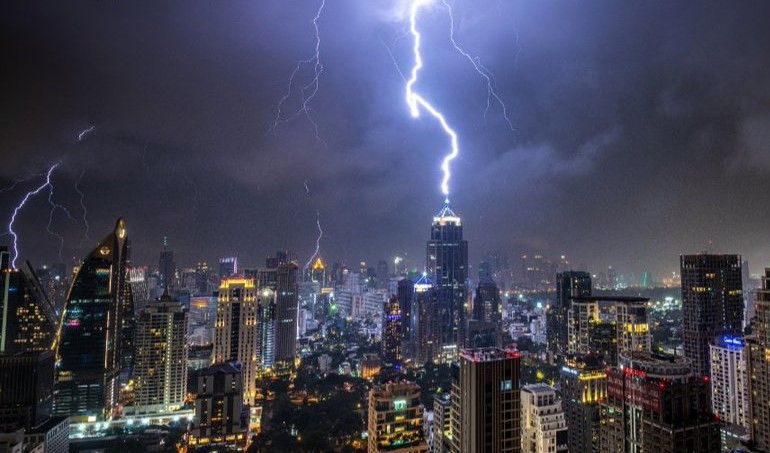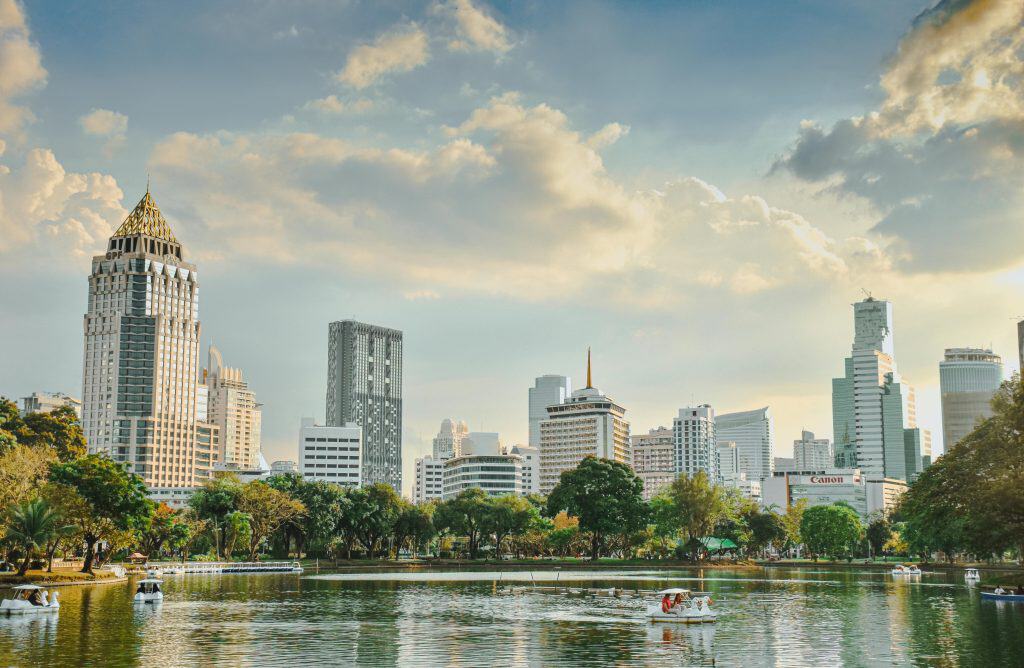Just as you’re planning your dream vacation, the skies decide it’s the perfect time for a few tropical storms in Thailand. You’ve heard about their legendary beauty, but with beauty comes the raw power of nature, and it’s essential you’re prepared to face it.
You’ll need to understand weather alerts to avoid being caught off guard, and securing your accommodation isn’t just a suggestion—it’s a necessity. As you pack your bags, remember, an emergency kit could be the difference between a minor inconvenience and a major crisis.
But don’t stop at just being prepared; staying informed and connected throughout your stay is crucial. And while you’re at it, familiarize yourself with evacuation routes; this knowledge could be lifesaving.
The storm may be brewing on the horizon, but with these safety tips, you’ll have a blueprint to navigate the unpredictable, ensuring your Thai adventure remains memorable for all the right reasons.
Understand Weather Alerts
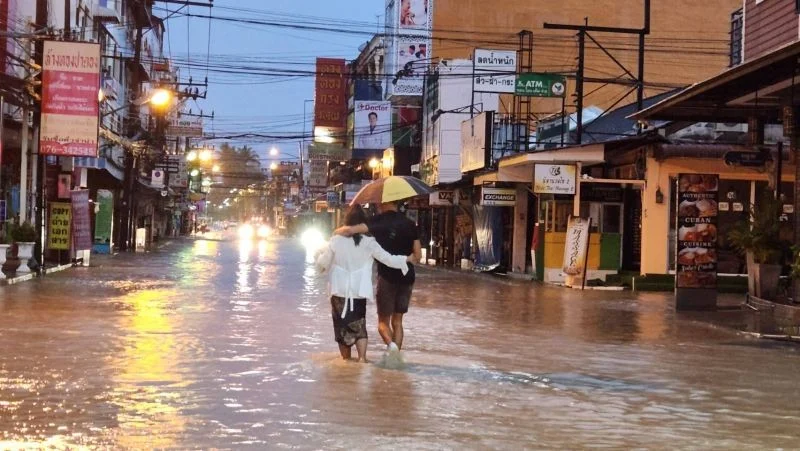
Do you know how to interpret the weather alerts issued before a tropical storm hits Thailand? It’s crucial to understand these warnings because they’re your first line of defense.
The Thai Meteorological Department (TMD) categorizes storms into three main alerts: yellow, orange, and red.
A yellow alert means a storm’s on the horizon. It’s time to stay informed and start preparing your emergency kit. Don’t ignore it—this is when you should plan your route in case you need to evacuate.
An orange alert ramps up the urgency. The storm’s closer and could potentially cause damage. Secure loose objects outside your home, stock up on supplies, and follow local news for updates. You’ve got to be ready to move if things escalate.
When a red alert strikes, it’s serious business. The storm’s imminent, and severe impact is expected. You should be executing your safety plan, ensuring you’re in a secure location. If you’re told to evacuate, don’t hesitate—safety’s your top priority. Stay indoors, away from windows, and keep your emergency bag close.
Secure Your Accommodation
Once you’ve grasped the meaning behind each weather alert, it’s essential to ensure your accommodation can withstand the approaching tropical storm. Start by inspecting your temporary home for vulnerabilities. Look for loose tiles, shaky windows, and any other potential hazards that high winds could exploit.
You’ll want to reinforce your windows, whether by boarding them up or applying storm shutters. Don’t forget to secure outdoor items; patio furniture and other loose objects can become dangerous projectiles. Bring them inside or anchor them down firmly.
Next, check your doors. They should shut tightly. If you’re staying in a bungalow or a low-lying area, consider sandbags to block any incoming floodwaters. It’s also wise to unplug electrical appliances to prevent damage from power surges.
For added peace of mind, confirm that your accommodation has an evacuation plan. Know where the nearest shelter is and the quickest, safest route to get there. Don’t hesitate to ask the staff or locals for advice—they’re often the best source of information in these situations.
Prepare an Emergency Kit
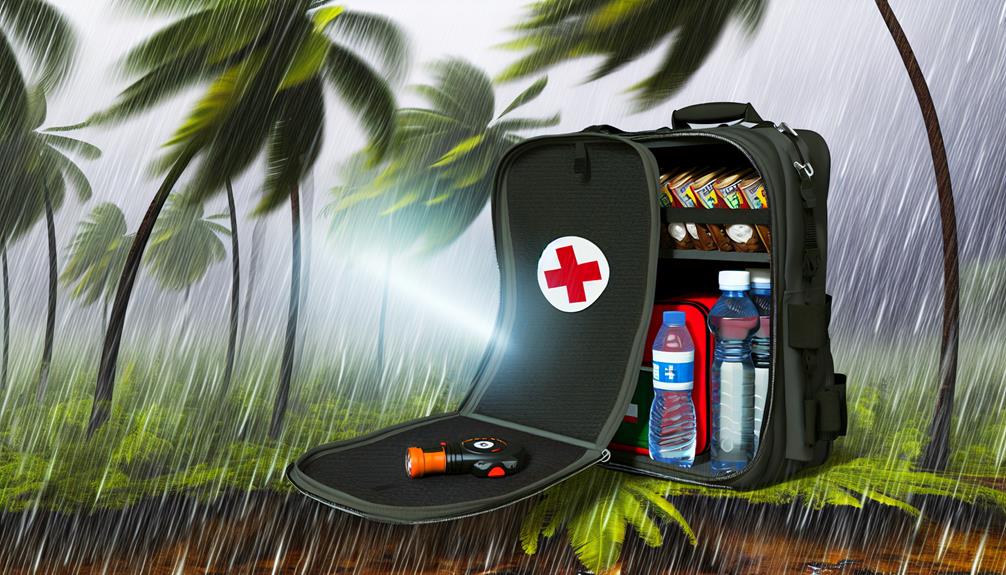
Assembling an emergency kit is a crucial step in ensuring you’re prepared for any eventualities during a tropical storm in Thailand. You’ll need a sturdy, waterproof container to keep your supplies safe and dry.
Start by packing enough bottled water for at least three days, considering a minimum of one gallon per person per day. Include non-perishable food items that don’t require cooking – think energy bars, canned tuna, and dried fruits.
Don’t forget a first-aid kit with essential medications, antiseptic wipes, bandages, and any prescription drugs you need. A flashlight with extra batteries is vital when power outages strike. You’ll also want a battery-powered or hand-crank radio to stay updated on weather conditions and emergency instructions.
Keep personal documents, like passports and identification cards, in a waterproof pouch. Add cash in local currency, as ATMs may not be operational. A multi-tool can be incredibly handy for various tasks, and don’t overlook the need for sanitation supplies such as hand sanitizer, soap, and wet wipes.
Lastly, throw in some lightweight rain gear and extra clothing. Preparing this emergency kit ensures you’re ready to face a tropical storm with confidence and resilience.
Stay Informed and Connected
Keeping abreast of the latest weather updates and emergency advisories is crucial during a tropical storm in Thailand. You’ll want to ensure you’re getting real-time information as the storm unfolds. This means:
- Staying tuned to local news stations.
- Following official weather forecasts.
- Monitoring social media channels for live updates.
Make sure your phone’s charged and you’ve got backup power sources. Download reliable weather apps and sign up for local alert systems to receive immediate notifications about weather changes or evacuation orders. Don’t forget to check these sources regularly, especially if the storm’s path or intensity shifts suddenly.
It’s also essential to establish a communication plan with your family and friends. Determine how you’ll contact each other if you’re separated and choose a meeting place in case you can’t communicate through phones or the internet. Keep a list of emergency contacts, including local authorities and rescue services, easily accessible.
Your safety may depend on the information you have and how quickly you act on it. By staying informed and connected, you’re better equipped to make decisions that can keep you and your loved ones safe during a tropical storm in Thailand. Don’t underestimate the importance of up-to-date information—it could be lifesaving.
Know Evacuation Routes
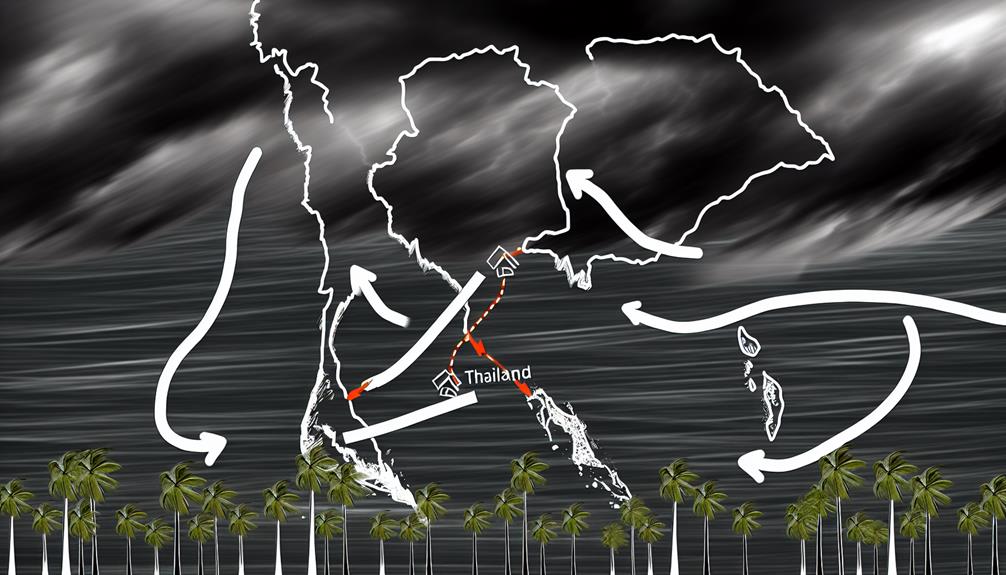
Familiarize yourself with local evacuation routes and procedures well before a tropical storm hits, ensuring you can navigate safely and swiftly if an evacuation order is issued. Don’t wait for the last minute to scramble for information; it’s essential to have a plan in place.
Check the website of Thailand’s disaster prevention and mitigation department or contact local authorities to get the most accurate and up-to-date information on the designated routes. Remember, the most direct path mightn’t always be the safest. Follow official instructions, as some roads may be closed or unsafe due to flooding or debris. Keep a physical map on hand, as power outages can make GPS unreliable. Also, make sure your vehicle’s gas tank is full and your emergency kit is packed in case you need to leave quickly.
Practice your evacuation route periodically so you’re familiar with it even under stress. If you don’t have personal transportation, learn about public transportation options or community evacuation plans. Knowing where to go and how to get there can make all the difference when you’re facing a tropical storm’s approach.
Stay calm, be prepared, and don’t hesitate to evacuate if it’s recommended. Your safety is paramount.
Frequently Asked Questions
How Can Tourists Communicate With Family Abroad During a Tropical Storm if Local Communication Infrastructure Is Down?
If you can’t reach your family during a storm because local networks are down, try using satellite phones or internet-based communication like social media, email, or messaging apps when you find a connection.
What Are the Best Practices for Safeguarding Important Travel Documents During a Tropical Storm in Thailand?
You should keep your travel documents in waterproof bags and store them in a secure, easily accessible location, so you can grab them quickly if you need to evacuate.
How Can Non-Thai Speakers Access and Understand Emergency Services and Assistance in Thailand During a Tropical Storm?
You can access emergency services by using translation apps or seeking help from English-speaking locals or hotel staff. Always keep the tourist police number handy for immediate assistance during a tropical storm.
What Specific Health Concerns Should One Be Aware of During a Tropical Storm in Thailand, and How Can I Prepare for Them?
You should watch out for waterborne diseases and physical injuries during a storm. Stock up on first aid supplies, clean water, and ensure you’ve got any personal medications to stay healthy.
Are There Any Cultural Protocols or Etiquette I Should Be Aware of When Seeking Shelter or Assistance During a Tropical Storm in Thailand?
You should always be respectful and polite when seeking help. Remove your shoes before entering shelters and adhere to local customs for greeting and thanking those offering assistance during a tropical storm.
Conclusion
You’ve now got the essentials to stay safe during Thailand’s tropical storms.
Always heed weather alerts, ensure your accommodation is secure, and have an emergency kit ready.
Stay connected for updates and familiarize yourself with evacuation routes.
By following these tips, you’ll be better prepared to weather any storm.
Stay safe and don’t underestimate Mother Nature’s power.
Remember, your safety is paramount, so take these precautions seriously whenever the skies turn grey.

